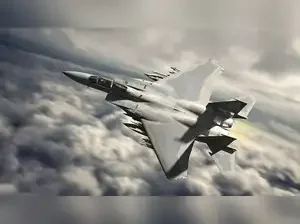F-15 jet destroyed by US Air Force at RAF Base in Britain
At the RAF Lakenheath airbase in England, the US Air Force recently took a notable F-15B Eagle fighter jet out of service through a controlled destruction process. This event marks the end of the aircraft’s operational life at one of the premier USAF combat air bases in Europe, home to the 48th Fighter Wing, known for its fleet of F-15C/D Eagles and F-35 Lightning II jets.
The destruction of the F-15 at the British base was part of the US Air Force’s routine fleet management and disposal procedures. Specific details on why this particular F-15 was destroyed rather than stored or sold have not been publicly disclosed, but such measures are typical for aircraft deemed no longer airworthy or cost-effective to maintain.
The F-15B in question had been serving in a non‑flying capacity as a ground instructional trainer at RAF Lakenheath. In this role, it allowed USAF maintenance crews to practice inspections, repairs, and component replacements without the operational risks or high costs of working on active combat aircraft.
Once its training role was fulfilled and the airframe was no longer needed for instructional purposes, the Air Force opted to dismantle it rather than place it in long‑term storage.
The jet was part of the McDonnell Douglas (now Boeing) F-15 Eagle family—a twin engine, tactical fighter aircraft used by the US Air Force. It has long served as a versatile and powerful air superiority fighter, known for its excellent maneuverability, speed (Mach 2.5 or about 1,875 mph), and advanced avionics.
It typically carries a crew of one (F-15C) or two (F-15B/D models), with the "B" variant being a two-seat trainer version of the single-seat F-15C air-to-air fighter.
RAF Lakenheath is a critical hub for USAF air operations in Europe, hosting multiple squadrons including those that fly the F-15 Eagle series. The base is known for high-tempo training missions and readiness exercises.
In recent years, it has also been the site of incidents involving F-15 jets. For example, on June 15, 2020, an F-15C from the 493rd Fighter Squadron crashed into the North Sea during a defensive training exercise due to pilot error and adverse weather conditions. The aircraft, bearing tail number 86-0176, was destroyed at an estimated cost of $45 million, and the pilot tragically lost his life in the accident.
In a separate incident reported in 2014 at RAF Lakenheath, an F-15D jet crashed after a flat spin triggered by imperfections in the radome nose cap assembly. The pilot ejected safely, highlighting the inherent risks involved in flying such advanced aircraft.
The F-15 Eagle family continues to be a mainstay of the USAF’s air superiority capabilities, with ongoing updates and training occurring regularly at bases like Lakenheath. However, aging airframes eventually reach the end of their service lives, necessitating controlled retirements. The recent dismantling of the F-15B jet reflects this operational reality.
* * * * *
Photo caption: At RAF Lakenheath, the U.S. Air Force decommissioned an F-15B Eagle, marking the end of its service. Serving as a ground instructional trainer, the aircraft aided maintenance crews in practicing repairs. The decision to dismantle it reflects routine fleet management, as the airframe was no longer needed for training purposes.

